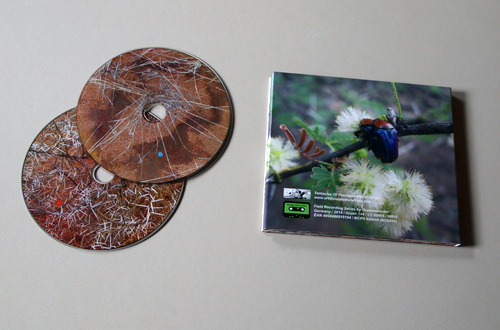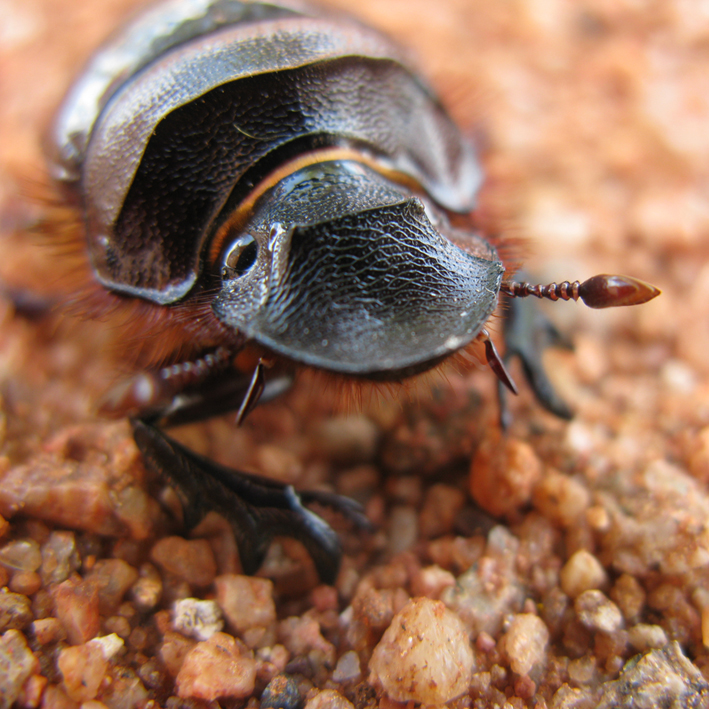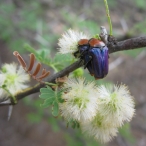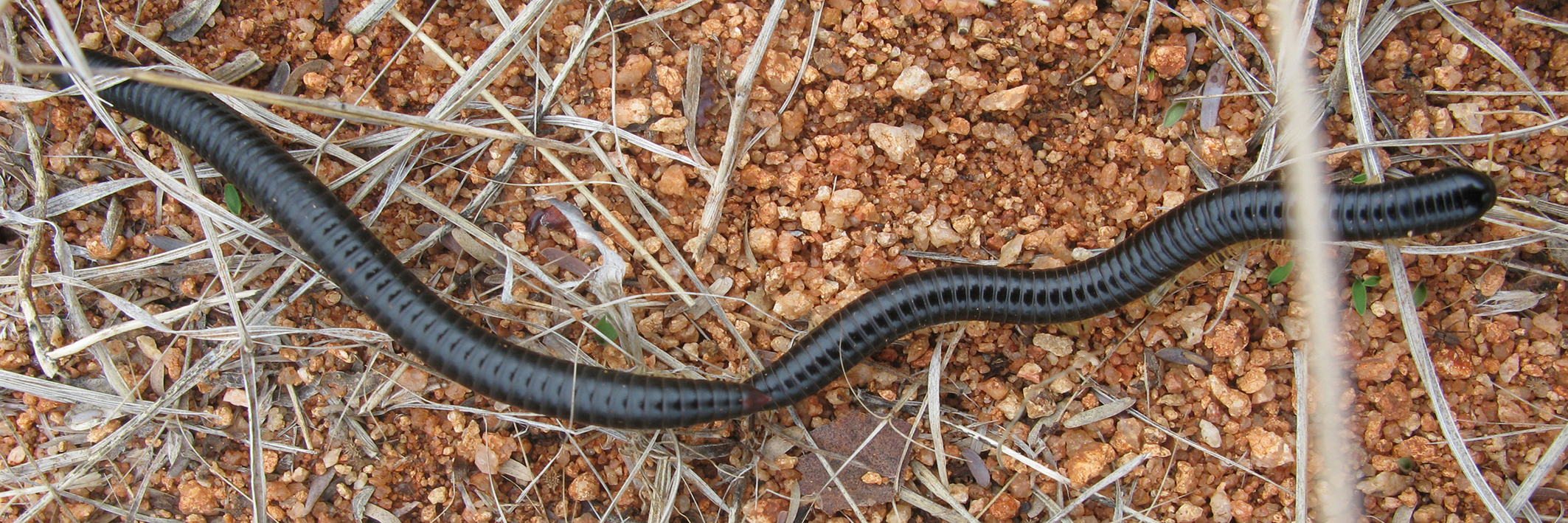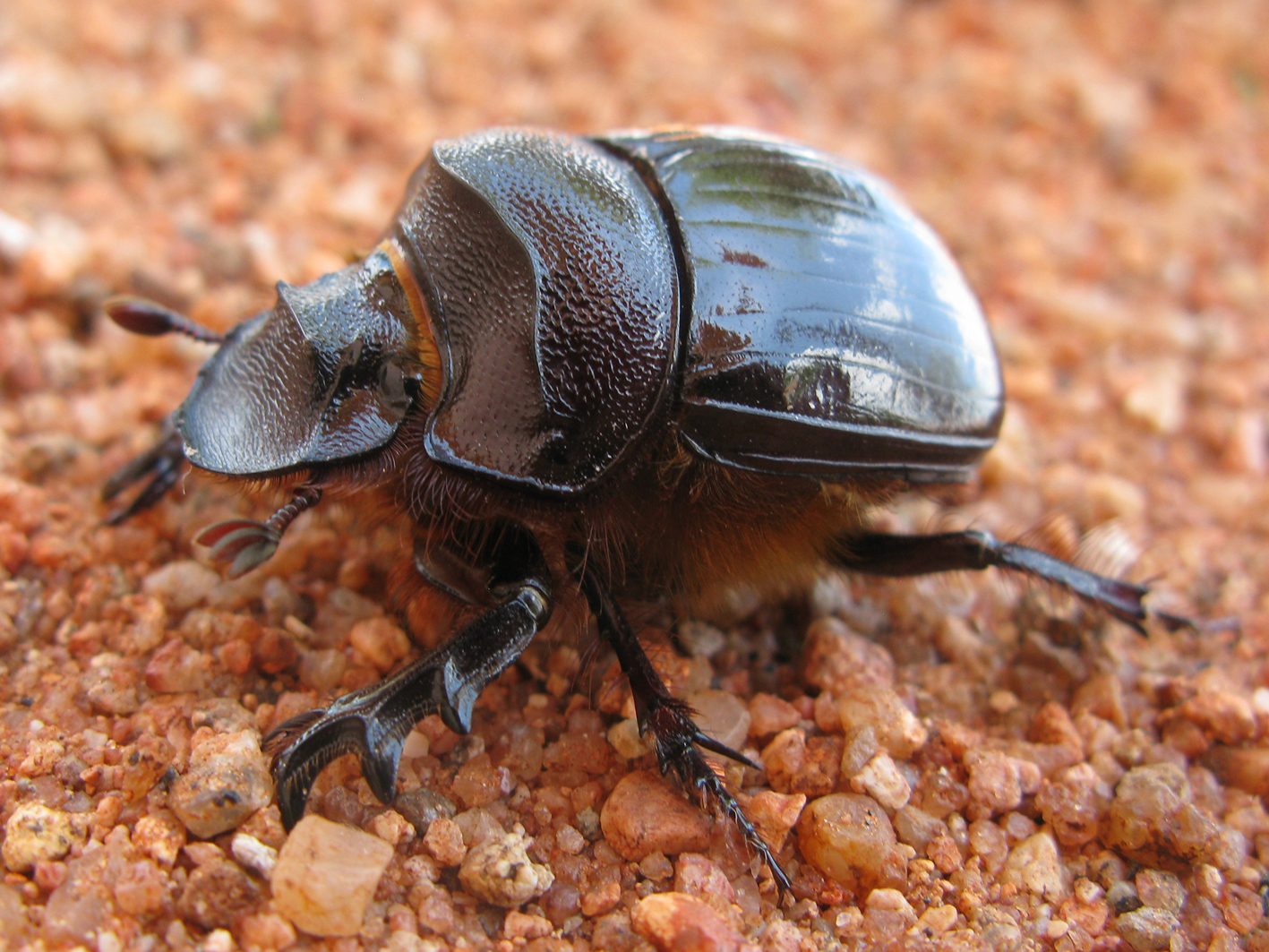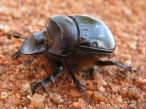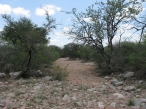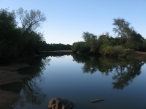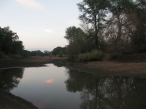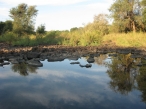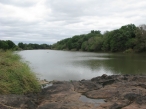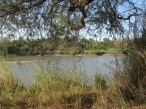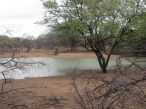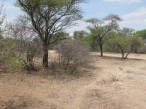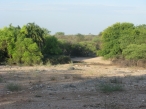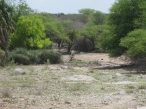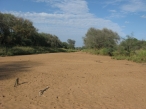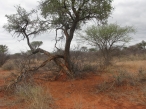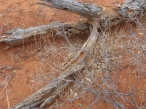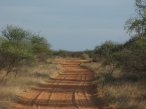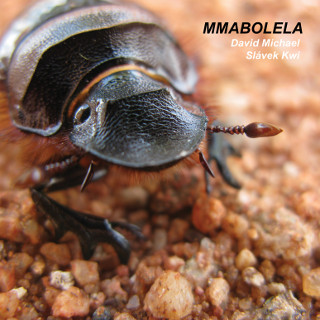
MMABOLELA | David Michael & Slavek Kwi
Gruen 144 | Double CD > [order]
Sound adventures from South Africa – Mmabolela Reserve in Limpopo.
Reviews
Note from unwritten diary of David:
3:45 AM. Time to get up. The Bushveld is already awake.
Slávek and I are both dragging a bit, rushing to get out the door and deploy.
After almost two weeks of nonstop recording, we are both tired and a little homesick.
At this point in the residency we have already found a dependable dawn recording location in a dry creek bed just far enough away from Weederdooper homestead so that our microphones will not pick up breakfast activities and just close enough for us to make it back for a nap before the morning field session. In a strange way this location reminds me of another of Slávek’s favorite recording spots on a small tributary flowing into Lake Mamori in Brazil. Slávek and I share a room at Weederdooper, which makes these dawn sessions simple. Our equipment too tends to share space in locations we scout together during many of the field sessions. We each now have many recordings of the exact same events, but from slightly different perspectives. The dry river bed at Umzumbi, the hippos at Mmabolel Rock, the bridge to Botswana, the watering holes. Perhaps when we get back home we will make a CD together.
CD 1:
Slávek Kwi (Artificial Memory Trace)
01: Usvit (Dawning in Dry Riverbed)
02: Windpeckers
03: Lament of Longhorn Beetle
04: Subaquatic Insects, Terrapins, Fish Munching on Algae
05: From Perspective of Wasps
06: Baboons
07: Mouchy
08: Hippo-pota-muses
09: Noc Pt1 (Toads, Bats [via heterodyne detector], Xmas Beetles)
10: Transition (Xmas Beetles close-up)
11: Noc Pt2 (Frogs, Bats [via microphone], Insects)
12: Noc Pt3 (Cicadas, Frogs, distant Baboons)
Excerpts:
Track 01
MP3
Track 04
MP3
Recordings made by Slávek Kwi in November 2013 at the Mmabolela.
Composed in between February and June 2014 in Beech House, Ireland.
Trk 01-09 was originally constructed as multichannel piece titled “AfriKaa!”
dedicated to children with autism.
The Sound Expedition was funded by The National Concert Hall in Dublin;
very special thanks to Ciara Cuffe and Simon Taylor for kind support.
Extended thanks to David for making this publication possible.
CD 2:
David Michael
01. Slávek’s Dry Creek
02. Midnight on the Limpopo
03. Hippopotamuses at Mmabolel Rock
04. Umzumbi with Baboons, Bats
05. Duets
06. The Bridge to Botswana IV
07. Afternoon with an Impala Carcass
Excerpts:
Track 4
MP3
Track 6
MP3
Recordings made by David Michael in November 2013 at the Mmabolela. Produced in Sleepy Hollow, New York during various sessions in 2014.
19 Tracks (157′16″)
Double CD (500 copies)
ILLUSTRATIONS:
Front of CD: Dung Beetle (Catharsius platycerus).
Rear of CD: Amethyst Fruit Chafers (Leucocelis amethystina) mating.
Illustration 1 – from left to right: Stones rich in metal, shadow portrait of David (left) and Slavek (right), Plant bursting out of dry land.
Illustration 2: various Millipedes in defensive position (Diplopoda).
Illustration 3: Millipedes (Diplopoda) mating.
Illustration 4 – from left to right: Armoured Ground Beetle (Gonopus tibialis), Giant Longhorn (Acanthophorus confinis), Small Green Dung Beetle (Gymnopleurus humanus).
Illustration 5 – from left to right: Red Velvet Mite (Trombidiidae), Cicada (Oxypleura lenihani), Armoured Ground Beetle (Gonopus tibialis) pritending being dead.
ADDITIONAL PICTURES:
1. Dung Beetle (Catharsius platycerus) from cover of CD from different perspective.
2.-18. The examples of locations of recordings (names are attached with each individual photo).
All recordings within this double album were made at the Mmabolela Reserve in Limpopo, South Africa, during “Sonic Mmabolela”, organized by Francisco López and James Webb. Extended thanks to the rangers and staff at the Mmabolela Reserve for making these recordings possible and to organizers and participants of Sonic Mmabolela for creating a deeply memorable experience. May there be many more.
Special thanks to Roland and Lasse-Marc at Gruenrekorder.
Photos and design by Slávek Kwi.
Field Recording Series by Gruenrekorder
Germany / 2014 / Gruen 144 / LC 09488 / IMRO / EAN 4050486919194
Hal Harmon | Musique Machine
After weeks of digesting wall noise and sounds residing on the harsher side of the experimental spectrum, I was due for a respite. And what better way to cleanse the palette than to escape into the naked sounds of the natural world as provided by Gruenrekorder and friends. The German-based field recording label (arguably, one of the most prolific in the field recording arena) teams up with Tentacles of Perception Recordings to present MMABOLELA, a 2 x CD by David Michael and Slavek Kwi (Artificial Memory Trace).
On MMABOLELA, both artists present sounds captured at the Mmabolela Reserve, located in the Limpopo province of South Africa. Both artists capture many of the same sounds found in the reserve, with each track title alluding to what animal/insect the listener is hearing. Throughout the 2 discs, we are greeted to an orchestra of indigenous wildlife including: beetles, crickets, hippopotamuses, baboons, bats, toads, terrapins, cicadas, frogs, varieties of birds, and many other sounds of the natural environment. Even in the liner notes, Mr. Michael acknowledges that he and Mr. Kwi recorded many of the exact events, though from slightly different perspectives. If I had to draw a contrast at all, Mr. Michael’s pieces sound like straight, raw field recordings. His pieces flow slowly and you get the sense that he is a patient observer soaking in the repetitive sounds of his natural environment. Mr. Kwi’s pieces sound like there was much more editing in his process and they tend to unfold at a faster pace. It goes without saying that despite the slightly different approaches to the same natural environment, both artists capture Mmabolela’s sounds in pristine clarity.
Once again Gruenrekorder and co have given the listener a ticket to a distant place, most of us will never step foot in. Through these recordings one feels like a world traveler, inspecting the majesty and minute details of Mmabolela’s natural splendors. For those that enjoy field recordings, consider this another worthy entry in your collection.
link
Pierre Cécile | Le son du grisli
Sonic Mmabolela est un festival, organisé par Francisco López et James Webb dans la réserve du même nom que ce double-CD. En 2013, il a permis à Slávek Kwi (Artificial Memory Trace) et David Michael de balader leurs micros (dès très tôt le matin !) sur un terrain riche en bestioles de toutes tailles et de toutes couleurs.
Rentrés à la maison, il leur a fallu réécouter tout ça pour composer (Kwi, CD1) ou éditer (Michael, CD2). In fine (CD1 et CD2, j’insiste – ce qui fait du matériau), leurs field recordings ne ressemblent pas aux field recordings de Môsieur Toutlemonde. Parce que Michael a l’air de prospecter avec un souci du détail quasi-scientifique (on entend même une mouche voler quand un hippopotame ne prend pas tout l’espace sonore) et que Kwi articule les bruits de la forêt en prenant en compte le rythme des chants ou en inventant des call and response sur-naturels…
Le plus étonnant restant quand Kwi, sous Artificial Memory Trace influence, donne l’impression d’emprisonner un insecte dans un pot de yaourth qu’il sonorise ou quand lui vient l’idée de planter violemment son micro dans le sol pour capter l’activité des grouillants / rampants. Peut-être ses plus belles prises !
link
Tobias Fischer | Beat
Zwei Field Recorder durchschreiten zur selben Zeit einen südafrikanischen Nationalpark, doch ihre Ergebnisse sind alles andere als gleich. Kwis Tracks muten wie psychedelische Collagen voller elektrisch surrende Felder, irr pulsierenden Vogelzwitscherns und stöhnender Stimmen an. Michaels Impressionen sind delikat und dezent, platzieren den Hörer in eine leise schillernde Welt aus Würmern, Käfern und Nilpferden. Sounds, die einem aus der elektronischen Klangsynthese vertraut sind, wirken in einem natürlichen Umfeld plötzlich seltsam verstörend. Es stellt sich ein Gefühl hypnoptischer Desorientierung ein – und das Ohr wird zum zutiefst subjektiven Erzähler.
link / Beat / April 2015
darkroomrituals – independent blog about postindustrial culture
Подобные звуковые дневники, признаюсь, приходится слушать, сдерживая в душе легкую зависть – хочется, конечно, не сидеть дома в наушниках, а отправится прямо туда, где родились и были записаны эти звуки, фиксируя неповторимые мгновения экзотических уголков природы. На сей раз душу будоражат полевые записи, сделанные в Африканском буше, в резервации Ммаболела, что где-то у реки Лимпопо, на самой границе с Ботсваной. В ноябре 2013 года именно там проходили семинары и мастер-классы под руководством не нуждающегося в представлении Франциско Лопеса для профессиональных sound art-артистов. Среди них были и Славек Кви («Artificial Memory Traces», может быть, лучший проект из тех, что выпускает работы в этом жанре) и Дэвид Майкл, которые и записали массу материала для этого двойного альбома. На обложке которого, кстати, мы видим множество фотографий насекомых, что не должно вводить вас в заблуждение – это не экскурс в микромир инсектов, эти звуковые пейзажи охватывают гораздо большие объемы. В привычной манере многоканальной записи, позволяющей расширить пространство композиции за счет комбинации различных записанных шумов, Славек Кви, пребывая с микрофоном на земле, в воде и воздухе, демонстрирует ауру африканского буша во всем многообразии: здесь много и охотно кричат птицы, причем их голоса подчас совершенно невероятны, здесь ветер шепчет что-то сухим, редким растениям, здесь далеко грохочет гром, заставляя на миг целый мир замолкнуть, чтобы потом вновь взорваться криками бабуинов, ревом гиппопотамов у ближайшей реки (а эти животные настоящими звездами этого альбома) писком летучих мышей и стрекотом ночных цикад, предвещающих долгую и холодную пустынную ночь, чья тревожная тишина тоже нашла свое воплощение на этих записях. Отличное звучание и многослойная «картинка» усиливает эффект присутствия и превращает слушателя в настойчивого исследователя, первооткрывателя белых пятен на нашей планете, а звуки живых существ благотворно влияют на психику – может быть, именно поэтому некоторые треки Славека были использованы в программе, призванной помочь детям-аутистам лучше ориентироваться в огромном окружающем мире. Треки Дэвида Майкла описывают в той же манере те же локации: в вечном конвое суетливых птиц и обезьян мы прогуляемся вдоль берега, постоим на узком, деревянном мостике, переброшенном через нее, послушаем тихий плеск воды о берег и пойдем дальше, в поисках мест, готовых оставить частичку своей неугомонной, шумной и такой первозданной души, пропустив ее через микрофон исследователя. Так что просто закройте глаза – и мир далекой Африки оживет перед вами. Отличный трип без путевки и визы, лично мне такой вид путешествий по душе.
link
Brian Olewnick | Just outside
Two discs, one from Michael, one from Kwi (who often records under the moniker, Artificial Memory Trace), both containing recordings of fauna (and weather and, I suppose, flora) in the Mmabolela reserve in Limpop, South Africa, as part of a sound festival organized by Francisco López and James Webb. It’s always a near-impossibility for me to attempt to evaluate efforts like this. I’m guessing there’s a good amount of post-recording construction involved, so listening as „compositions“ seems the way to go and, to that extent, things are fine. Kwi’s pieces move really well, are quite varied and, of course, contain sounds one’s likely to have never before encountered, particularly those of an insectile nature (plus what I take to be bats on the 9th track). It’s an interesting experience, „settling in“ like that, approaching the pieces from a certain angle and these cuts lend themselves to it rather easily, very enjoyable. Michael’s disc is subtler, quieter, less overtly manipulated (if I’m correct about either’s methods of construction, which might well not be the case; sometimes the density here, though transparent, is immense), imparting more a sense of place and time, less of a construction. It’s all so marvelously recorded–turn up the volume and all sorts of sounds appear–that it’s quite easy to lie back and bathe in. Both discs work very well on their own terms for me; I can only imagine how very enthusiastically listeners seriously into field recordings in this area would react. Recommended.
link
textura
One of the things that helps make Gruenrekorder’s products so fascinating is that they encompass such a wide range of styles and genres. In presenting phonography, audio-visual work, and sound art, three recent releases (each a different format) by David Michael and Slavek Kwi, Manfred Waffender, and DinahBird provide an excellent illustration of the label’s range.
The first of the trio is Mmabolela, a double-CD set of field recordings-based settings by Slavek Kwi (aka Artificial Memory Trace) and David Michael. Working in the realm of phonography, which treats nature as an acoustic site teeming with musical sounds, the two collected their recordings during a November 2013 residency at the Mmabolela Reserve in Limpopo, South Africa during Sonic Mmabolela, an event organized by Francisco López and James Webb. Adding to the release’s interest is the fact that Michael and Kwi gathered their recordings at the same time and place (in a liner note, Michael writes, “We each now have many recordings of the exact same events, but from slightly different perspectives”), which naturally encourages the listener to attend to their respective presentations with that detail in mind.
Kwi’s CD extends twelve pieces across eighty minutes, the shortest of them a single minute (a close-up of Xmas Beetles) and the longest a twenty-minute nocturnal portrait (one of three) featuring cicadas, frogs, and baboons. Kwi gets close to the subject matter, resulting in sounds that can sometimes seem almost violent when they seem so near. Of course, these ever-stimulating nature mini-symphonies don’t feature hippos, toads, birds, frogs, bats, and beetles only but the environment, too. Sounds of wind, water, thunder, rain, and rustlings of various kings appear throughout as a backdrop to the chirps, cries, grunts, windpecks, and buzzing. Though Kwi’s interventions appear minimal with respect to the raw material involved, some degree of compositional design is apparent in the overall sequencing, the transitions between pieces, and the occasional interventions that occur within them. There are moments, for example, when the insect thrum in the final nocturnal setting starts to resemble an electronic soundscape as much as a field recordings piece.
Just as Kwi closes his CD with a twenty-minute setting, Michael opens his with one of equal duration, “Skavek’s Dry Creek,” a peaceful portrait flush with bird chatter. Michael weaves seven settings into an uninterrupted travelogue that transitions seamlessly from day into night (“Midnight on the Limpopo”) and from locales featuring the bellow of hippopotamuses to one with baboons and bats. In the aptly titled “Duets,” the chattering counterpoint of various creatures is heard for thirteen hypnotic minutes; replete with grunts, chirps, and other noises, “The Bridge To Botswana IV,” on the other hand, is characterized by boisterous levels of activity. If the buzzing seems to swell at CD’s end, perhaps it’s because we’re spending the “Afternoon With An Impala Carcass.” If there’s one difference between Kwi’s and Michael’s presentations that stands out more than any other, it’s that whereas Kwi’s at times reveals the presence of the artist, Michael disappears from view in his. Though the listener is obviously aware that he’s the controlling hand who’s selected and sequenced the material, his presence is camouflaged by the absence of noticeable interventions.
Abetted by sleeve photos of dung beetles and millipedes, the recordings enable the listener to feel as if he/she has been transplanted into a resplendently rich soundworld teeming with exotic birds, animals, and insects. The optimal conditions for immersion in this case call for loud volume, darkness, and a high-quality sound system; experiencing Mmabolela in accordance with such conditions helps facilitate the illusion that one is at the site, even if only for the 160-minute duration of the recording. […]
link
Łukasz Komła | Nowamuzyka.pl
Cisza, falujące powietrze, ryki dzikich zwierząt, świergot ptaków, szeleszczące chrabąszcze, a w tle słychać pioruny – tak wygląda dźwiękowy pejzaż RPA.
Slávek Kwi to czeski artysta, kompozytor i naukowiec, którego zainteresowania badawcze dotykają zjawiska percepcji jako podstawowego wyznacznika relacji z rzeczywistością. W ciągu ostatnich trzydziestu lat bardzo często odwiedzał tropikalne lasy deszczowe, gdzie oczywiście rejestrował dźwięki natury. Od początku lat 90. Kwi wydał już ponad dziesięć albumów jako Artificial Memory Trace. Współpracuje także od wielu lat z dziećmi z autyzmem. Z kolei David Michael to amerykański naukowiec eksperymentujący z dźwiękiem. Swobodnie porusza się między biologią a technologią. W 2012 roku wydał interesującą płytę „The Slaughterhouse” (Gruenrekorder), na której utrwalił proces uboju zwierząt.
W listopadzie 2013 roku obaj artyści wybrali się na wspólną podróż do Republiki Południowej Afryki, gdzie w ramach programu Sonic Mmabolela – prowadzonego przez Francisco Lópeza i Jamesa Webba – zarejestrowali swój materiał. Wszystkie nagrania zostały wykonane w rezerwacie Mmabolela, a także m.in. nieopodal rzeki Limpopo. Pierwsza płyta należy do Slávka Kwiego i brzmi bardziej różnorodnie niż propozycja Davida Michaela, co nie znaczy, że ucho Amerykanina nie wyłapało ciekawych dźwięków. Najbardziej mnie zafascynowały u Kwiego pomruki pawianów i hipopotamów, przypominające swoją ekspresją rozjuszone plemię wojowników. Kwi zaprezentował też wciągające fragmenty wypełnione odgłosami świerszczy, żab, ptaków, chrząszczy i cykad, nagrane gdzieś w pobliżu suchego koryta rzeki Umzumbi.
Na drugiej płycie Michael spogląda z nieco innej perspektywy na afrykańską przyrodę. Odwiedził praktycznie te same miejsca co Kwi, ale jego uwaga skupiła się na bardziej spokojnych odgłosach przyrody, choć w kilku miejscach niespodziewanie pojawiają się grzmoty i niskie dźwięki hipopotama brzmiące niczym przenikliwy dron.
Dwupłytowy zestaw „Mmabolela” to idealna pozycja na te zimowe dni, nie tylko dlatego, że wyrywa nas z mroźnej aury, jaką mamy za oknem, lecz przede wszystkim znakomicie oddaje transowy klimat afrykańskiej przyrody, której dźwiękowe bogactwo możemy podziwiać na wielu poziomach.
link
Frans de Waard | VITAL WEEKLY
Two releases involving Slavek Kwi, also known as Artificial Memory Trace. On the CD he works under his own name and use sounds recorded at the Mmabolela Reserve in Limpopo in South Africa when he and David Michael were part of larger project involving field recordings. I am not sure if I know who David Michael is. Together these discs have about 160 minutes of field recordings. It’s a bit strange listening to these crickets, beetles, insects, birds, baboons, frogs, cicadas and such like and watching outside at the same time and seeing this grey Dutch winter sky, occasional rain and knowing it’s very cold outside. Maybe all of this evokes a sense of holiday? Unlikely as it may seem, as I don’t like the heat very much, so such a wildlife expedition would not be something for me. There are differences between Kwi and Michael. The latter has fewer pieces, seven instead of twelve, and as far I can judge in Michael’s pieces there is less happening. He explores a single sound for a longer duration, whereas Kwi’s pieces are bit shorter and seem to be employ additional layering inside a piece, although I am not fully certain of that. It’s a long trip, these two and half hours, but it’s certainly worthwhile. From the department of pure field recording. […]
link
Guillermo Escudero | Loop
David Michael is a sound artist from Birmingham, Alabama, who works in the fields of biology and technology. Slávek Kwi is a Czech composer, sound artist and researcher who lives and works in Ireland.
This collaboration between sound artists was in the context of ‚Sonic Mmabolela‘ organized by Francisco L’opez and James Webb held at the Mmabolela Reserve in Limpopo, South Africa.
The recordings capture field recordings of the dry river bed at Umzumbi, the hippos at Mmabolel Rock, the bridge to Botswana, the watering holes, storms. Also, you may appreciate different birdsongs, wildlife, subaquatic insects, turtles, fish chewing algae, baboons, toads, bats, frogs, cicadas.
This experience allows us to appreciate the different sounds of wildlife their smallest details and textures.
link

